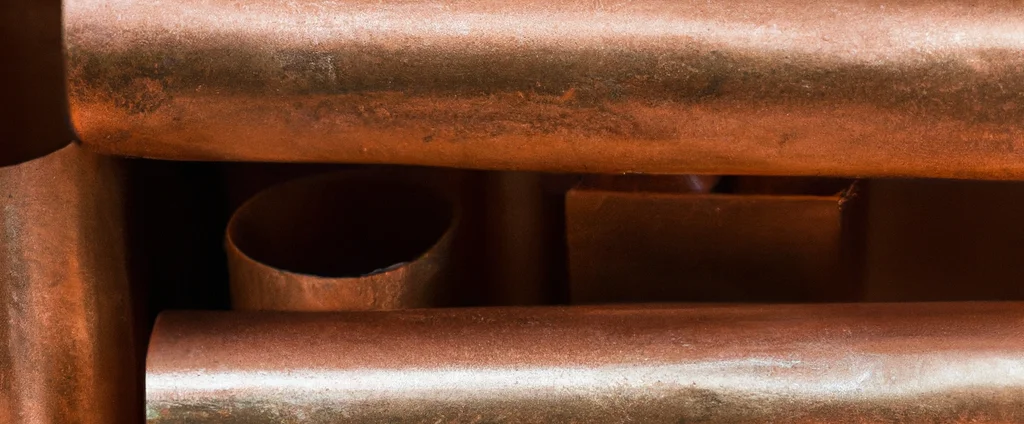Beryllium Copper (UNS C17500)

Beryllium copper C17500 is a high-performance copper alloy known for its combination of high strength, excellent electrical conductivity, and wear resistance. It is widely used in electrical connectors, aerospace components, and precision springs.
| Chemical Composition | ||
|---|---|---|
| Element | Min | Max |
| Copper | 95.6% | 97.2% |
| Beryllium | 0.4% | 0.7% |
| Cobalt | 2.4% | 2.7% |
The following table provides a list of beryllium copper C17500 properties in both SI and US customary/Imperial units.
Click on the button to switch between Metric and Imperial units.
| Physical Properties | Metric |
|---|---|
| Density | 8600 kg/m3 |
| Mechanical Properties | Metric |
| Tensile Strength (Ultimate) | 310 - 860 MPa |
| Tensile Strength (Yield) | 170 - 760 MPa |
| Shear Strength | 200 - 520 MPa |
| Young’s Modulus (E) | 125 - 130 GPa |
| Shear Modulus (G) | 50 GPa |
| Elongation at Break | 8 - 30% |
| Poisson’s Ratio (ν) | 0.34 |
| Thermal Properties | Metric |
| Melting Point | 1030 - 1070 °C |
| Thermal Conductivity | 200 W/m·K |
| Specific Heat Capacity (Cp) | 420 J/kg·K |
| Coefficient of Thermal Expansion (αL) | 1.76×10-5 1/°C |
| Electrical Properties | Metric |
| Electrical Conductivity | 2.6×107 S/m |
| Electrical Resistivity | 2.9×10-8 Ω·m |
The values in this table are approximate and can vary depending on various factors such as the specific manufacturing process and heat treatment applied to the alloy.
Advantages & Disadvantages of Copper C17500
| Advantages | Disadvantages |
|---|---|
| High strength | High cost |
| Electrical conductivity | Beryllium hazards |
| Wear resistance | Limited availability |
| Thermal conductivity | |
| Resistance to fatigue |
Applications of Copper C17500
Beryllium copper C17500 finds applications in various industries where a combination of high strength, electrical conductivity, and wear resistance is required. Key applications include:
- Electrical Connectors: Widely used in electrical connectors due to its excellent electrical conductivity, high strength, and resistance to wear and corrosion. It ensures reliable electrical connections in various industries, including telecommunications, automotive, aerospace, and electronics.
- Springs and Contacts: The alloy’s high strength, fatigue resistance, and good electrical conductivity make it suitable for springs and contacts in electrical switches, relays, connectors, and other electronic components. It allows for efficient and reliable transmission of electrical signals.
- Welding Electrodes: Often used as a welding electrode material due to its high thermal conductivity, which helps in efficient heat dissipation during welding. It can withstand the high temperatures and mechanical stresses involved in welding applications.
- Bearings and Bushings: The excellent wear resistance and high strength make it suitable for bearing and bushing applications. Used in industries such as automotive, aerospace, and machinery, where sliding or rotating components require durable and wear-resistant materials.
- Resistance Welding Electrodes: Commonly used in resistance welding applications, particularly in spot welding and seam welding processes. Its high conductivity and strength help in achieving efficient and reliable welds.
- Metalworking Tools: The hardness and wear resistance make it suitable for metalworking tools such as punches, dies, and molds. It can withstand high mechanical stresses and provide extended tool life.
- Heat Sinks: Good thermal conductivity makes it useful in heat sink applications, where it efficiently dissipates heat generated by electronic components, helping to maintain optimal operating temperatures.
- Aerospace Applications: Employed in various aerospace applications, including connectors, terminals, relay blades, and bearings. Its combination of strength, conductivity, and corrosion resistance is beneficial in aerospace environments.
